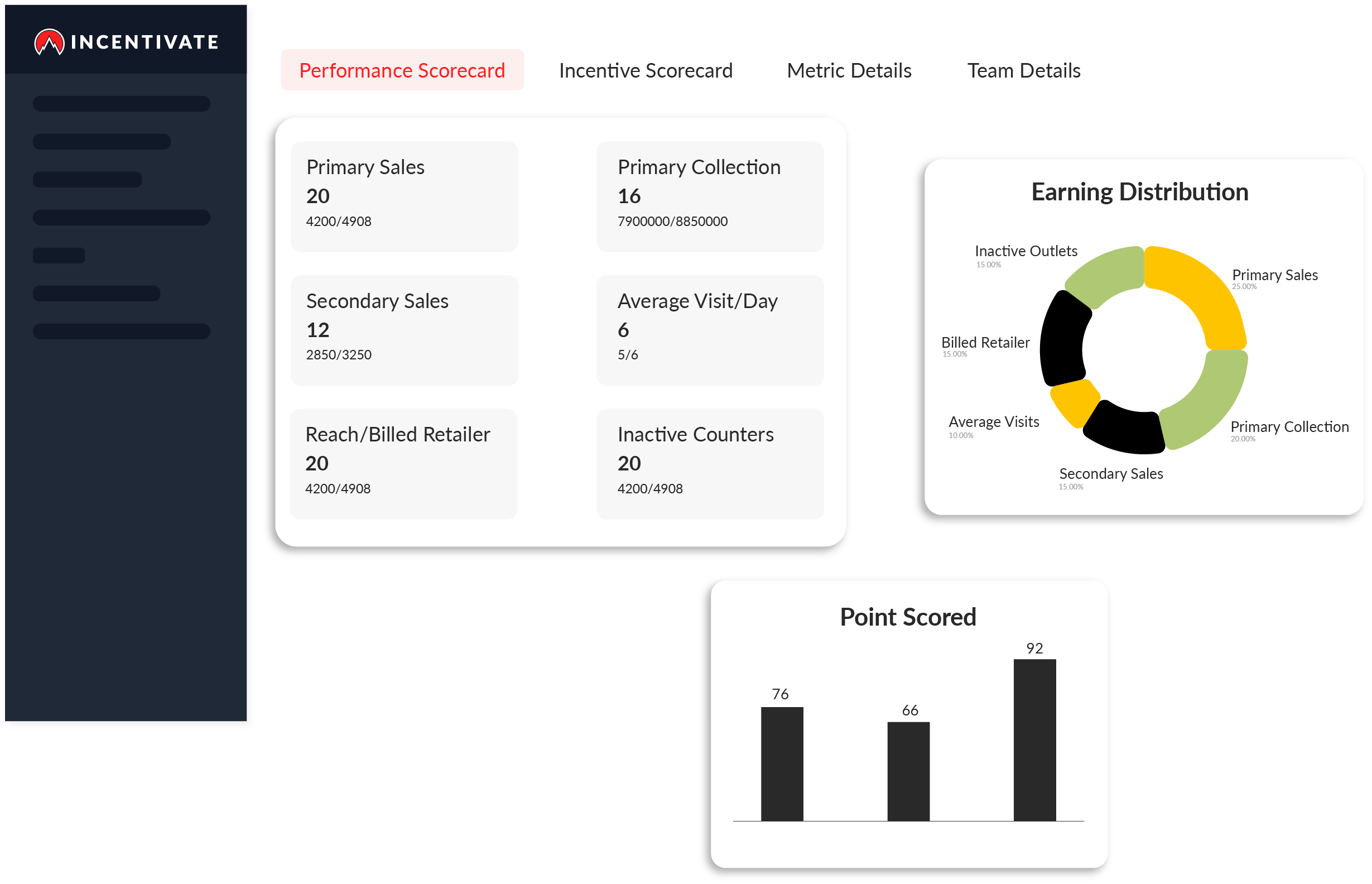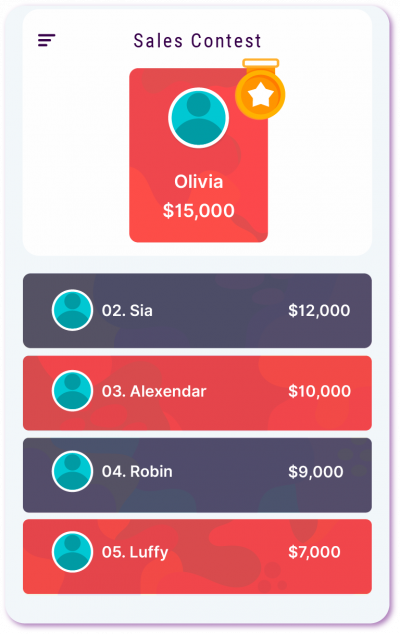Drive Retail Sales with Incentive Programs
Your salesperson needs to convince the customer to buy your product. On similar lines, your salesperson needs to be convinced of the advantages of their actions as well as their role in the sales organization. There is no other factor more critical than motivation; and like in other industries it is true in Retail. Are you wondering what an Incentive Plan has to do with this? Well, Retail, a USD 26 trillion industry is increasingly becoming more complex because of multi-channel buying experiences introduced in today’s digital age. Increased online/offline competition, slim margins, same-day delivery, and omnichannel strategies are successfully personalizing the shopping experience of a buyer. However, does this guarantee growth? No, it does not unless you have a highly motivated salesforce; a combination of on-the-ground employees such as in-house salespeople and external agent channels, and distributors. While you build a team to execute on the ground it is critical for them to stay connected with the company’s goals. Solid incentive plans/schemes that provide the sales team with a long-term goal can make this happen. Good incentive plans/schemes account for and incentivize sales across different facets of the value chain. In addition to a long-term incentive plan, innovative contests or bonanzas can also be introduced to bring short-term focus. This instils a healthy feeling of competition within the team. Salespeople can achieve their individual, team, and organizational goal with a combination of contests and core incentive plans.
A good tool for this is an incentive management solution that captures the spirit of an incentive plan. It provides transparency to the field in terms of how rewards get computed. It also provides them with useful information on a regular basis. Capturing the spirit of an incentive plan and offering transparency assists them in planning and executing their day-to-day sales efforts.

Common Data Sources Integrated
If you are a retailer serving customers across the country you will end up dealing with a ton of unstructured and disorganized sales transactions data daily. SAP and Oracle are just a few examples of systems used for maintaining such data. This necessitates a strong and scalable system that enables real-time computing. HRMSs such as Oracle, Workday, Darwinbox, GreytHR, and others are critical as well. They store information for incentive-eligible employees. Furthermore, retail has always had convoluted hierarchies. These must be managed with care when it comes to incentive plans that roll up from associates or relationship managers.
Incentivate manages these easily by establishing a pull-push relationship with such systems. It may work on-demand or according to predefined schedules. You can experience seamless connections with these platforms and simplify your life.
Typical components in a Retail Incentive Plan
Retail relies a lot on distribution channels for which they recruit distributors. In-house sales reps are aligned to distributors across the nation and are responsible to drive revenue through these distributors. Products sold to distributors are known as primary sales which usually are the main metric when it comes to incentivizing the salesforce. These products are channelled into the market (to retailers) and this part of the sales chain is known as secondary sales which happens to be another metric for calculating incentives. Distributors and Agents are usually commissioned on this metric. Additionally, retail being a fast-paced industry with low margins, it is important to have an ongoing cash flow for the organization to manufacture and supply products to the market. The ability of salespeople to bring in cash from distributors and keep the engine going is another metric that they may be incentivized upon. It is usually called “Primary Collection” and is one of the biggest sustainability drivers for a retail organization. Things may appear differently based on the type of retail business you are in. Metrics may differ and there is a high possibility of salespeople being paid on conversion rates, profits per transaction, product volume, outlet growth, etc.
Regardless of the type of retail business one is in, organizations may define on-target earnings for in-house sales employees for almost every metric. They may also apply weights depending on the products they wish to promote more in the market. Finally, there are exceptions, just as there are in every other organization. Unforeseen circumstances like a pandemic may wreck the goals of your incentive plan and your sales motions completely and while there won’t be any revenue flowing in the organization would want to minimize the impact of it on salespeople by paying them guarantees or minimum incentive amounts. Such instances need special handling that need to be accounted for. This is where Incentivate’s no-code engine comes into play. It helps set up these metrics and complex rules around them easily. The administration team can finally focus on the bigger things at hand.
Typical components in a Retail Sales Contest / Bonanza
The metrics mentioned above usually happen to be part of the core incentive plan that runs across the year. These are aligned with the organization’s goals. However, they may struggle to motivate the field on a daily basis. This happens despite aligning their sales conduct with the organization’s goals. That’s where the strategy and finance teams come into play. They collaborate to create innovative contests or bonanzas with the goal of bringing short-term focus. This instils a healthy feeling of competition within the team. Salespeople can achieve their individual, team, and organizational goal with a combination of contests and core incentive plans. Contests are highly tactical in nature with a very quick turnaround time. They may be incentivized on metrics other than the ones mentioned above. Sales activities like fast five (first one to sell products to 5 unique retail outlets), inactive outlets (ability to activate a retail counter that sold your products in past but has one passive in recent times), or even sales outreach (average visits) over a defined period of a week or couple weeks can be leverage for running contests. Contest winners are rewarded with monetary or non-monetary incentives. A highly important aspect of contests is communication. Updating the field as frequently as on an hourly basis keeps the adrenaline going for salespeople. Incentivate helps you achieve this with a single click through WhatsApp integration. Individual, as well as business performance, can now be sent to salespeople’ WhatsApp accounts through a single click on Incentivate.

Processing & Payout Frequency
Retail is an agile industry, and its salesmen are similarly geared. They spend almost all their time on the field yet are deprived of performance-focused insights. Despite a great Incentive Plan, this causes misalignment with their targets and organizational direction.
Incentivate assists in the creation of dashboards for the whole sales team. These dashboards update on a regular basis. They provide relevant information and updates, assisting individuals in meeting their sales goals. They also keep track of their progress and earnings to date as well as create simulations to achieve a desired target or payout. Furthermore, organizational leadership requires a unique set of reports and dashboards. These are more strategic, displaying overall corporate performance over specific periods. Periods vary depending on how your incentive plans are set up. Few retail companies opt to score performances that may later be converted to cash / non-cash benefits. There can be scenarios where some metrics are paid on a monthly basis while others are paid annually. Such complexities can lead to major operational challenges for the team executing the payouts.
Incentivate can manage these levels of complication in your incentive plans with ease. In fact, it also offers frequent actionable data for your sales staff. This keeps them ahead of the competition.
Challenges Addressed
Every retail business is unique and has issues that are likely to be different from others. Over the last decade, we’ve handled a variety of challenges for retail organizations. Organizations have only grown in size but not their infrastructure. Sales data keeps pouring in from a variety of sources. Mergers and acquisitions are happening at an unprecedented rate. This is resulting in several systems holding data in various forms. It is difficult to handle such a massive volume of data which causes payout delays. That’s the last thing a company wants: their salesmen do not get paid for laying down those vast yards in the field. Other challenges include the difficulty to produce contests quickly enough. The modern buzzword is data analytics. Your ability to slice and dice data to derive decision-making insights sets you apart from the competition in terms of speed and accuracy. However, retail companies have struggled to quickly establish this and produce correct sorts of contests. The salesforce has been robbed of tactical inputs, leaving them stranded on the field with no direction. Furthermore, in addition to the metrics presented in this article, there are hundreds of others that may be used to create incentive plans. There is no way of using these metrics to adjust incentive plans without requiring days of testing. Retail companies of today lack the flexibility to create these sets. All of this contributes to a longer time to market and, as a result, an organizational loss. When you realize that these issues lead to employee attrition, they become even minor.
Incentivate’s Builder functionality quickly resolves these challenges. It allows you to go through several data items, normalize them, and put them into a common format. This results in simply building up new incentive plans, and contests, and allows for more frequent processing. Furthermore, you can quickly set up parameters that can be changed and used for a given length of time. You can even design intuitive dashboards and what-if calculators. This will motivate the salespeople and reduce your attrition rates.

